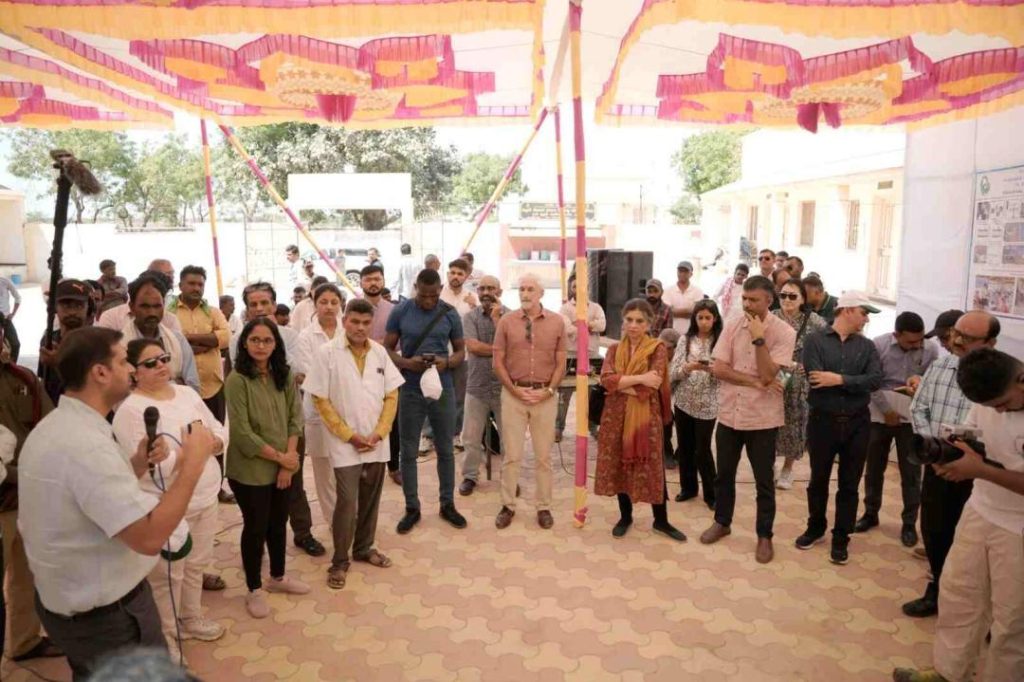
Enhancing Disaster Preparedness with Innovative Solutions
In the face of increasing natural disasters, it is crucial for communities to be prepared and responsive to minimize damage and loss of life. The recent gathering of experts in Gujarat, India, aimed at strengthening disaster risk management systems and implementing innovative solutions to enhance disaster preparedness. This collaborative effort between the United Nations, the Government of India, and the Reliance Foundation has led to the development of cutting-edge early warning systems and anticipatory action strategies.
The Indian subcontinent is prone to various natural disasters, including earthquakes, cyclones, floods, and heatwaves. The 2001 Bhuj earthquake and the 2013 Odisha cyclone are stark reminders of the devastating impact of these disasters on human lives and infrastructure. In recent years, the frequency and intensity of these disasters have increased, posing a significant threat to the country’s development and sustainability.
To address this challenge, the United Nations, the Government of India, and the Reliance Foundation came together to launch the “Innovative Early Warning Solutions” initiative. The project aimed to design and implement innovative early warning systems and anticipatory action strategies to enhance disaster preparedness and response.
Innovative Early Warning Systems
The project focused on developing early warning systems that could detect and alert communities to potential disasters. The system uses advanced technologies such as satellite imaging, drones, and artificial intelligence to monitor weather patterns, soil moisture, and other environmental factors that can trigger disasters.
The innovative warning system is designed to provide real-time data and alerts to local authorities, emergency responders, and communities. This enables them to take proactive measures to evacuate people, secure infrastructure, and mitigate damage.
For instance, the system can detect changes in soil moisture levels, which can indicate the likelihood of landslides or floods. This information can be used to alert authorities and communities to take necessary precautions, such as evacuating people from high-risk areas or mobilizing emergency responders.
Anticipatory Action Strategies
The anticipatory action strategy is a critical component of the disaster preparedness plan. It involves identifying and addressing vulnerabilities and risks in communities before disasters strike. This includes implementing measures to strengthen infrastructure, enhance community resilience, and improve emergency response capabilities.
The strategy focuses on empowering local communities to take ownership of their disaster preparedness and response. This is achieved through training and capacity-building programs, community outreach, and engagement with local authorities and emergency responders.
For example, the project has implemented community-based early warning systems in rural areas. These systems involve training local volunteers to monitor weather patterns and alert communities to potential disasters. This has empowered local communities to take proactive measures to protect themselves and their properties.
Impact on Disaster Response
The innovative early warning systems and anticipatory action strategies have significantly improved disaster preparedness and response in India. The project has led to:
- Reduced response times: The early warning systems have enabled emergency responders to respond quickly and effectively to disasters, reducing the time taken to reach affected areas.
- Reduced casualties: The anticipatory action strategies have helped to reduce casualties during disasters, as communities are better equipped to prepare for and respond to emergencies.
- Strengthened disaster risk management: The project has strengthened India’s disaster risk management system, enabling the country to better prepare for and respond to disasters.
Conclusion
The “Innovative Early Warning Solutions” initiative is a shining example of how technology and community engagement can come together to enhance disaster preparedness and response. The project’s impact on disaster risk management in India is a testament to the power of collaboration and innovation in saving lives.
As the frequency and intensity of natural disasters continue to increase, it is crucial for communities to be prepared and responsive. The innovative early warning systems and anticipatory action strategies developed through this project offer a promising solution to enhance disaster preparedness and response.






